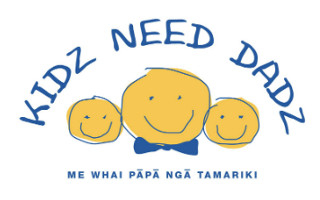Times Up For Timeout
by Mark Nixon & Megan Reynolds
Time Out” has become a major tool of discipline for many parents, but it is used in different ways: some parents lock their kids up, while others make them sit it out at a specified place in the room.
Mark Nixon and Megan Reynolds argue that, if used as punishment, Time-Out sends all the wrong messages to kids and is really not much better than smacking.
For generations, parents have sought a reliable and dependable way to handle childhood misbehaviour. The most recent and popular discipline technique is time-out. “Time-out” has been promoted as an efficient way to deal with poor behaviour, providing time for children to think about their misbehaviour and think about more positive behaviours to be used in a similar situation in the future.
However some claim that time-out does not model or teach children what is a more desirable behaviour. In addition, if a child ultimately feels anxious, rejected, hurt, or humiliated as a result of time-out, they may be more likely to increase other negative behaviours or withdraw from the adults administering time-out. These childhood scars can ultimately affect their adult personalities and behaviours.
While time-out usually involves time away from a situation, the definition of time-out is very user dependent.
The popular definition and practise of time-out means being sent to a quiet room or area for however long someone else makes you stay there (ie imprisonment), and is what is being defined as time-out here.
However for others, time-out can refer to a time spent away from the family of the child’s own free will, for example going into a quiet room and reading a book.
This form of time-out does not have to mean punishment, but rather a break from the pressure of the current situation, and may even be relaxing, and is better referred to as “time-off”.
As humans our behaviour is always a reaction to something; frustration, boredom, anger, pain, hunger, etc. For example, a baby’s cry is a survival mechanism; it helps ensure that its parents will attend to its needs, and therefore establish feelings of security in the child. The misbehaviour of older children and adolescents is often a cry for help, announcing that their needs are not being met.
Their often intense outbursts stem from their dependent nature and their inability to tolerate frustration well. In addition, infants, toddlers, and many pre-school aged children are unable to identify let alone verbalize the frustrated needs that are making them upset.
When time-out is used, parents first firmly demand that their child stop misbehaving and be quiet. The child is then usually required to go and sit alone in a room, away from parents, and admonished not to come out of the room until they are sure that they can control their behaviour or a set time has passed.
Being placed in time-out prolongs the time that a child must endure the frustrated need that caused their misbehaviour. Thus the child’s needs are unmet, and remain unmet as the time-out continues.
What exacerbates this increasing state of frustration is that the child must be alone, away from its parents who the child must rely on to meet his or her needs. Moreover, being alone in time-out can create painful emotions like fear, worry, rejection, hurt and anger.
Although the child may not dare to express this anger when in time-out, the child often expresses it sometime after being released from time-out by becoming angry and defiant. The practice of separating a child in time-out from parents can in itself become the cause of future misbehaviour, and a vicious cycle can develop.
In a study of two, three and four year olds in child care centres, children were interviewed about their views of school, remembrance of causes of time-out, and feelings and perceptions of being in time-out. Reasons for being put in time-out fell into three categories: physical aggression, verbal aggression, and not following an adult’s request.
When asked how they felt about being in time-out, children reported negative feelings of sadness and fear, as well as feeling alone, disliked by the teacher, and ignored by peers. Fewer than half of the children could accurately recall why they had been placed in time-out, suggesting that children were not contemplating their misbehaviour, guilt, or alternative behaviours – all of which time-out is meant to provoke.
In addition, the study reports that the majority of children placed in time-out were there for noncompliance.
According to Dr Haiman, a serious cost of time-out in childhood is the lesson that one should bottle up uncomfortable emotions. To cope with upset and an inability to express distressing feelings, children can learn to ignore and/or distract themselves from the energy of their hurt and angry feelings.
As a result, nervous habits can emerge such as thumb sticking, fingernail biting, hair pulling, skin scratching, tugging at clothes, self-pinching, and other similar behaviours. The purpose of these behaviours is to ward off uncomfortable feelings, and in identification with their parents’ criticism of them, to punish themselves.
These defence strategies help the child to repress their painful feelings which can often become a characteristic feature of the adult child’s life.
Interpersonal dilemmas and conflicts are best resolved when each individual has sufficient opportunity to talk to and be heard by the other person. Modelling, initiating, and practising the process of open dialogue is essential if a child is to learn healthy problem solving.
However, time-out does not lend itself to this process. Helping children talk about how they feel, combined with parental patience, is required if children are to develop the ability to verbalise their feelings and needs rather than act them out.
Parents are more likely to develop a well-behaved, self-disciplined child by responsively and continuously meeting their child’s developmentally normal needs and drives; by demonstrating and articulating humane values in day-to-day interactions with their child; and by exposing their child to life experiences that strengthen and reinforce these values. Troubled and spoiled children are created when parents do not meet their child’s normal needs and drives consistently and appropriately.
What are the basic, normal childhood needs? If a child is physically healthy, well nourished, satisfactorily exercised, and not tired, the child’s physical needs are being met. A child who has received sufficient and continuous satisfying attention, affection, and recognition from parents and other people to whom the child is emotionally attached, the child’s social and emotional needs are fulfilled.
If a child’s normal curiosity, exploratory nature, and intrinsic interests are regularly allowed opportunities to unfold and develop, the intellectual needs of that child will be satisfied.
When young children are given opportunities, within a securely supportive and trustworthy environment, to become increasingly more independent, make choices, and meaningfully participate in decision making, their normal need to exercise some control over their life and to express their own will are being appropriately addressed. Even advocates of time-out state that any kind of time-out should not be used on children under 3 ½ years old.
Until the age of reason, which starts around three years old (and is an ongoing process that even some adults have not fully mastered) supervision and distraction are the most effective parenting tools.
This means simply that young children need constant supervision and removal, kindly and firmly, from what they can’t do and guidance to an activity they can do.
Children can’t understand the reasoning behind punishment either. Punishment may stop the behaviour for the moment, but what long-range message has the child received? Is the child deciding, “I’m bad”, or “I’ll get even and hurt back”, or “I’ll hit others when I’m bigger”, or “yelling at people is a good way to communicate”, or “I won’t get caught next time”? Children aren’t consciously aware of the decisions they are making, but they are making decisions nonetheless.
If you must use a form of time-out then model positive time-off, ie, “Let’s take some time-off to read a book or listen to music until we feel better.” Sometimes the child will just toddle off and lie down until they feel better.
If they hesitated, then ask, “Do you want me to go with you?” We have ended a few battles with our two year old daughter by asking if she wants to go and think about what ever task we have got into a yes/no argument over.
She will happily head off and often comes back seconds later and happily does what ever was requested. It works as a face saving method for both of us. The line of distinction between this option and time-out is letting her have a choice about going to think about things rather than a parental demand which always seems to evoke a hackle-rising, situation inflaming and defiant –No!
Another option, which may at first seem a little surprising: ask for or give a hug. Our rudimentary understanding of rat psychology would have us believe that rewarding misbehaviour is likely to increase the misbehaviour.
However, since misbehaving children are discouraged children, sometimes the best way to help them stop misbehaving is to help them feel encouraged. Where did we ever get the crazy idea that in order to help children do better, first we have to make them feel worse? Children do better when they feel better. Remember, there isn’t any tool that works every time.
The following is a list of alternatives to punishment offered by Adele Faber and Elaine Mazlish:
-
Point out a way to be helpful. “It would be helpful if you picked up my saw”
Express strong disapproval (without attacking the child’s character) ‘I’m furious that my new saw was left outside to rust in the rain!”
State your expectations. “I expect my tools to be returned after they have been borrowed”
Show the child how to make amends. “What this saw needs is a little steel wool and a lot of elbow grease.”
Give the child a choice. “You can borrow my tools and return them or you can give up the privilege of using them. You decide.”
Take action. Child: Why is the tool box locked? Father: You tell me why?
Problem-solve. “What can we work out so that you can se my tools when you need them, and so that I’ll be sure they’re there when I need them?”
Refraining from punishment makes for happier families (like this one) say Mark and Megan
Time-out, like spanking, does not take long to administer; however learning the life long lesson of self discipline takes time to achieve. As parents we need realistic expectations of our children’s behaviour based on their developmental stage.
It is important to recognise a virulent myth that still exists in our society: that fully meeting a child’s needs will spoil the child. The research literature indicates that the opposite is true. The well-disciplined child is created when parents appropriately fulfil the needs of childhood and adolescence. As parents we have a myriad of positive parenting tools – time-out is not one of them.
Next: Understanding Men




